Sunday, March 28th 2021

ASUS Launches Single-Fan RTX 3060 12GB Phoenix Graphics Card
ASUS has recently launched their first Ampere Series Phoenix card with the GeForce RTX 3060 Phoenix (PH-RTX3060-12G). The Phoenix features a 2.5 slot design with a single fan and measures just 17.7 x 12.8 x 5.1 cm which makes it the shortest Ampere GPU from ASUS. The card features the NVIDIA standard 1777 MHz boost clock but can be configured with the bundled ASUS software for 1807 MHz. The Phoenix includes three DisplayPort 1.4a connectors and one HDMI 2.1 along with a single 8-pin power connector. The card is now available to purchase from select retailers but official pricing and availability have not been released.
Source:
ASUS
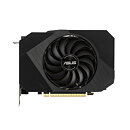
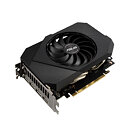
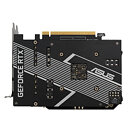
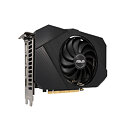
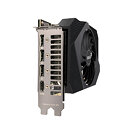
38 Comments on ASUS Launches Single-Fan RTX 3060 12GB Phoenix Graphics Card
The only time when big companies are not making evident business move, is when those moves are not lucrative enough to bother with them ( like Windows glaring UI issues, people are still buying and using it anyways) or when they can't see the true potential of a market . But they will jump on anything lucrative.gentleman's agreement ? In the tech industry where everyone is constantly low kicking when the other isn't looking ? :confused: ARM is also going beyond the consumer market, Qualcomm and Huawei are selling A.I/general compute card for the datacenter
Nvidia backed out of smartphones and ARM SoCs because of the intense competition and high price of taking part - developing those SoCs is very expensive, and having their own GPU IP wasn't enough of an advantage to keep them in the game (anticompetitive moves from QC also reportedly played a large part in this, with the technologically superior Tegra 4 barely being adopted at all). ARM is on the other hand expanding rapidly into the server/datacenter space, after about five years of trying and failing, they're now truly gaining ground (and are highly competitive in terms of peak performance). Check out AnandTech's recent server reviews for some info there. ARM and QC are also trying to get into the laptop market with WOA. Intel spent billions trying to get into the tablet and smartphone spaces, but ultimately lost out simply because their Atom CPU cores weren't competitive. AMD has an active ARM licence and has previously tried making an ARM server core (discontinued as it wasn't very good and Ryzen turned out to be a great success). And so on, and so on.
There are no non-compete agreements, just the realities of what is feasible and what is lucrative. The server accelerator market is certainly lucrative enough that anyone with a GPU or GPU-like chip IP could make massive amounts of money if they could make their product suitable for that. So if QC, ARM, PowerVR, or anyone else had a GPU design that could unproblematically scale up to the 200-300W range while maintaining the efficiency advantage they have in the 2-5W range, they would. As it stands, the cost of doing so would be massive for them as it would essentially necessitate a ground-up rearchitecting of their GPU architectures, and there's no guarantee whatsoever that they would be able to compete with what Nvidia and AMD are currently selling. So they don't bother. It would be a very, very, very expensive and risky gamble.
Not possible or just naughty example for comparisson I wrote?
Always happy to be proved wrong, but I still don't think that they're going to get a 170W cooler into the space constraints of a half-height card. I suspect the increased thermal density of Samsung's 8nm might actually make it harder, so a 106W card based on a 40nm will be easier to cool than a 106W card based on Samsung's 8nm, all else being equal.
But given the prevalence of SFF cases supporting full-size GPUs these days, it's highly unlikely for anyone to make a GPU like this. Too bad, really.